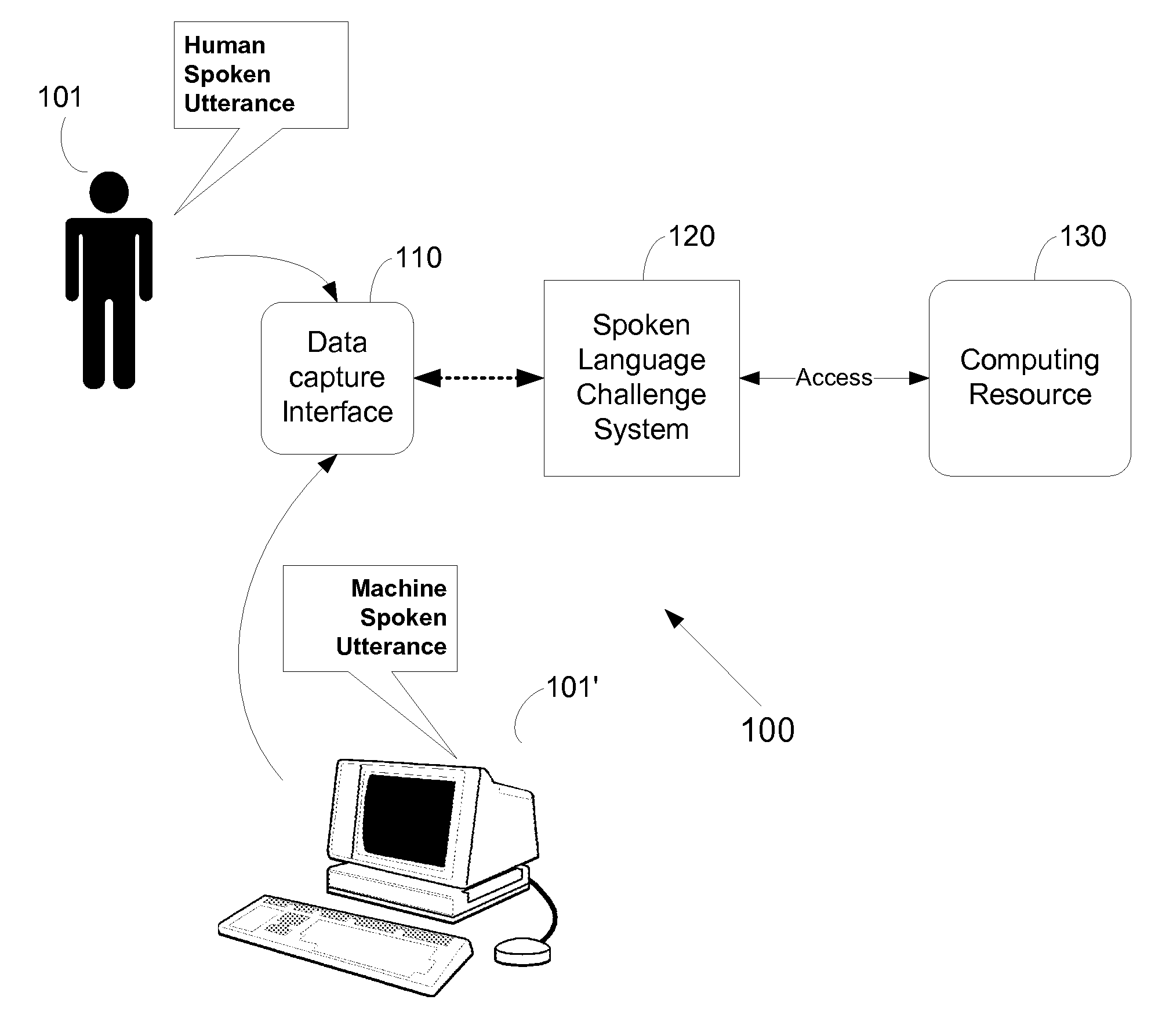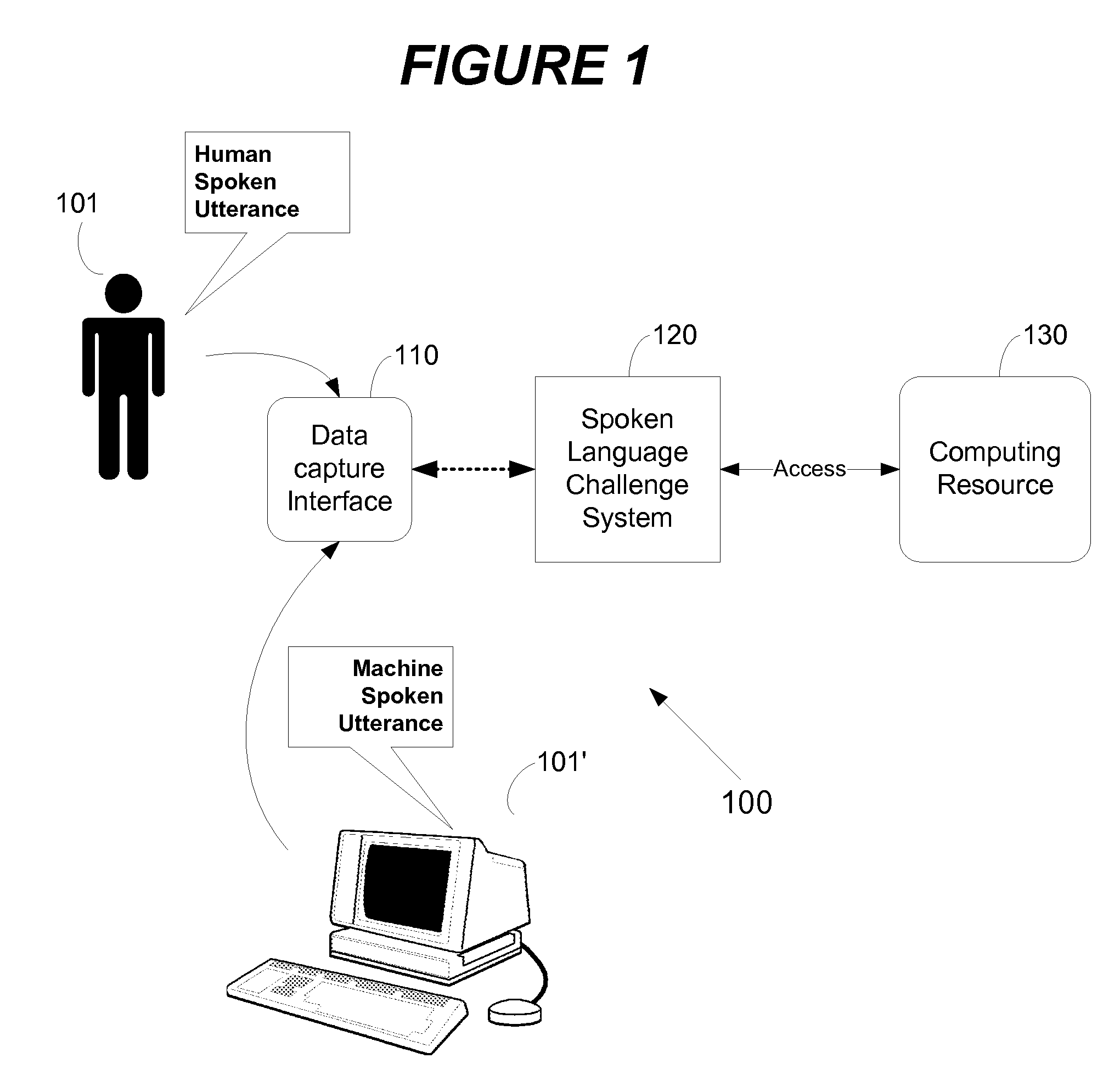CAPTCHA Using Challenges Optimized for Distinguishing Between Humans and Machines
a technology of human and machine input and challenge, applied in the field of electronic systems for detecting and differentiating input provided by humans and machines, can solve the problems of traditional forms of captcha that are at risk of becoming obsolete, speech recognition is improving rapidly, and audio captchas of this type are similarly doomed to failur
- Summary
- Abstract
- Description
- Claims
- Application Information
AI Technical Summary
Benefits of technology
Problems solved by technology
Method used
Image
Examples
Embodiment Construction
Basic Elements & Concepts Employed in Invention
[0072]FIG. 1 depicts a typical computing system 100 environment which can benefit from embodiments of the present invention, namely, in allowing flexible control over access to computing resources, data, etc., using a spoken language challenge approach. As can be seen in this figure, an “entity” (which may be a natural person or a machine) 101, 101′ provides input to a data capture interface 110. In a preferred embodiment the interface can be based within a GUI or a VUI, including within a web / voice browser, a cell phone, a PDA, a desktop computing system, or similar electronic system including consumer electronic devices (such as set top boxes, cameras, conventional phones, etc.)
[0073]Again while the invention relies primarily on extracting audio information from the entity attempting access, other modes of data may be provided at the same time through other mechanisms (i.e., through keyboards, mice, etc.). The invention therefore can ...
PUM
 Login to View More
Login to View More Abstract
Description
Claims
Application Information
 Login to View More
Login to View More - R&D
- Intellectual Property
- Life Sciences
- Materials
- Tech Scout
- Unparalleled Data Quality
- Higher Quality Content
- 60% Fewer Hallucinations
Browse by: Latest US Patents, China's latest patents, Technical Efficacy Thesaurus, Application Domain, Technology Topic, Popular Technical Reports.
© 2025 PatSnap. All rights reserved.Legal|Privacy policy|Modern Slavery Act Transparency Statement|Sitemap|About US| Contact US: help@patsnap.com



